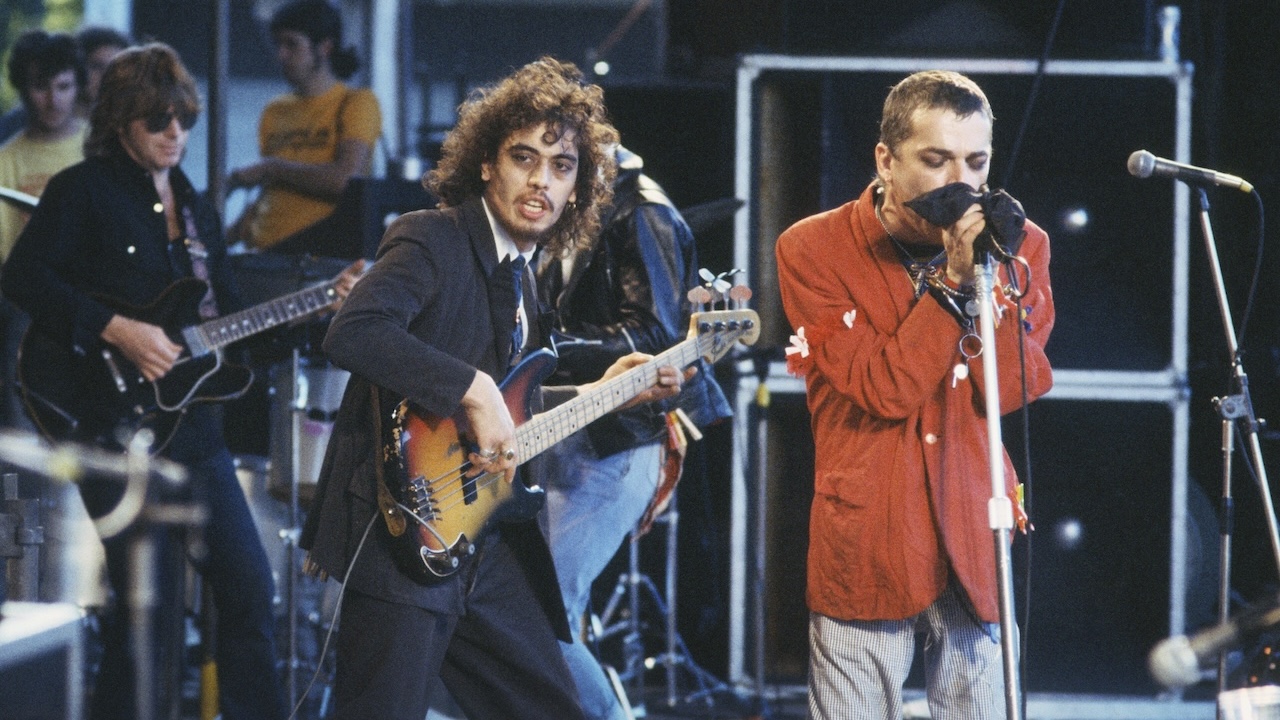
The influential reach of Jaco Pastorius is immeasurable, spanning generations of bassists in all corners of the globe, in a multitude of musical styles. Just a few weeks after seeing Jaco perform with Weather Report at London’s Hammersmith Odeon in October 1978, Norman Watt-Roy found himself in the studio with Ian Dury & the Blockheads, suggesting a surging 16th-note bassline for Dury's self-proclaimed anti-violence song Hit Me With Your Rhythm Stick.
“In rehearsal, we had the tempo, the chords, and the eighth-note piano riff, and having just seen Jaco, I got the idea to double up the bassline and play 16ths,” said Watt-Roy, who has been cited by everyone from Pino Palladino to Jamiroquai's Paul Turner as a key influence.
“There was bass before Jaco and after Jaco; his playing turned my whole life around by showing me that I have an orchestra in my hands. I first heard him on Weather Report's Birdland, and then I found my way to his 1976 solo album, but seeing him live was a whole other experience.”
Born in Bombay, India, in 1951, Watt-Roy moved with his family to North London at age four. With the sounds of the Beatles and the Stones in his ears, he followed his older brother Garth, a lead guitarist, and began playing rhythm guitar at ten. When the bassist in his brother’s band “couldn't take the blisters,” Garth suggested the 14-year-old Norman take over bass guitar duties, which he did, first on a Rosetti Hofner and then on a Fender Jazz Bass.
Inspired by Paul McCartney and the Tamla/Motown rumble of James Jamerson – “because they always had a counter-melody going on in their basslines” – Watt-Roy got serious tutoring from Steve Miller's lefty bassist, Gerald Johnson, while touring the U.S. in 1970. Making his mark on vinyl back home, Watt-Roy formed the soul horn band Greatest Show On Earth with his brother, joined Glencoe in 1972, and then formed Loving Awareness with drummer Charley Charles. While doing a 1976 session with Charles, they met Ian Dury and Chaz Jankel, recorded the 1977 album New Boots and Panties!! and officially became the Blockheads.
Although the band fell under the new wave/punk banner, the Blockheads incorporated other idioms into their singular sound, including funk, reggae, jazz, disco, music hall, and Dury's quasi-rap vocal style – all elements that can be found on Hit Me With Your Rhythm Stick.
Having rehearsed a week prior, where the tune was introduced, co-writers Dury (on scratch vocal) and Jankel on piano, drummer Charles (playing to a Roland Beat Boxloop), Mickey Gallagher on Hammond organ, guitarist John Turnbull, and Watt-Roy assembled in the main room of the Workhouse Studio on London's Old Kent Road to cut the track live.
It begins with Watt-Roy’s pulsating 16ths leading the groove over Charles' kick-drum quarter-notes and some funky piano and guitar comping. For the first verse, Watt-Roy continues his 16th pace by playing through the changes using chord tones, generally two-at-a-time. Upon arriving at the IV chord (Db), the Jaco influence really emerges, as he quotes a familiar Pastorian boogie pattern utilizing the dominant 7th of the chord, and a chromatic passing tone.
The first chorus finds the feel shifting to contrasting eighth-note octaves (born of Jankel's dance hall stride piano and the disco of the time), which allowed Watt-Roy to ground the groove while getting a break from the steady 16ths. He also doubles up some of the down-beats to keep the energy intact.
A key to the bassline, which Watt-Roy plucked with two alternating fingers and occasionally his ring finger, is how he subtly swings the line, mainly through the use of legato, long tones punctuated by periodic shortened notes.

Watt-Roy used his Sunburst ’72 Fender Precision, which, he reported, had a thinner-than-usual P-Bass neck, an added Jazz Bass pickup, and Rotosound strings; the instrument was recorded direct to the API console, as well as via a mic on the studio's small bass amp. The group did 11 passes, eventually settling on one of the early takes.
He made no punches or fixes, while overdubs included Dury's final vocal, Davey Payne's sax solo (playing two saxophones simultaneously at times), a second snare drum part by Charles, and Turnbull’s synth guitar.
Reflecting on Rhythm Stick, Watt-Roy offered, “The challenge is to be pushing and leading the track with the 16ths, while also sitting with the drums in the pocket. Locking with the drummer is always job one. As Jaco famously said, women and rhythm section first!”







